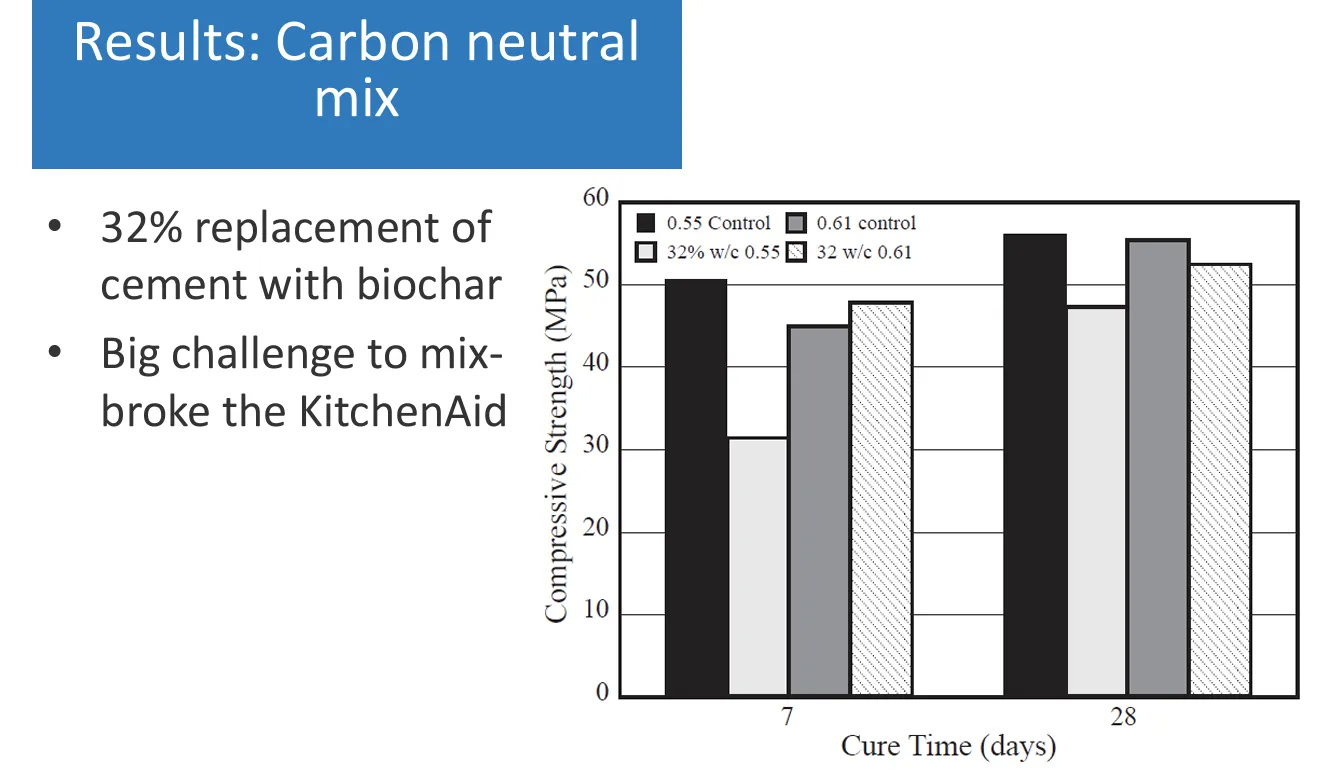Case Study: Sequestering Carbon and Strengthening Concrete
December, 2024Biochar as a building material – sequestering carbon and strengthening
concrete
This study highlights the potential of engineered biochar to significantly offset the carbon footprint of concrete while improving its structural integrity. By adding 100 kg of biochar per ton of cement, concrete can sequester 60 kg (132 lbs) of carbon per cubic yard, making it a powerful tool in reducing the environmental impact of construction materials.
Key Findings:
- Engineered biochar locks in carbon while strengthening concrete across key dimensions.
- The addition of biochar enhances the hydration process and integrates seamlessly into the hardened concrete matrix.
- The cement sequestration (CemSeq) char is a non-chemical, inert additive that complements existing methods to reduce cement emissions.
- Tailored milling of biochar, fast pyrolysis production, and optimized cement flowability are crucial for achieving these results.
Conclusion:
This research demonstrates that biochar has the potential to play a pivotal role in creating carbon-negative concrete by 2050. By integrating engineered biochar into cement, the construction industry can simultaneously reduce its carbon footprint and improve the strength and durability of concrete.
Impact:
The CemSeq char product offers a sustainable solution for reducing emissions from concrete production while enhancing its performance. This breakthrough technology could help the concrete industry meet its carbon reduction targets, contributing to a more sustainable future.


